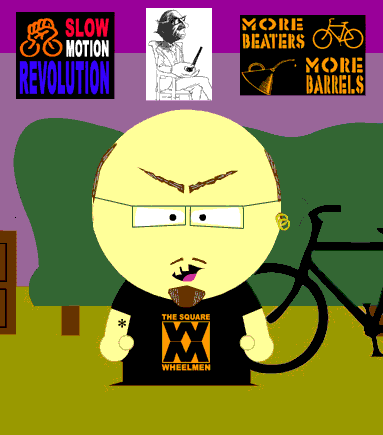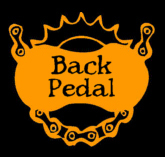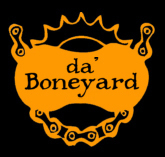Dog noses
 They're one of the few completely superfluous parts of old English 3speeds. Whether you're a beaterbiker or connoisseur you've probably paid them little attention until you started hearing an irritating clicking from the front of your Raleigh, Pashley, Rudge, or Hercules.
They're one of the few completely superfluous parts of old English 3speeds. Whether you're a beaterbiker or connoisseur you've probably paid them little attention until you started hearing an irritating clicking from the front of your Raleigh, Pashley, Rudge, or Hercules. That's what exactly happened to me several months ago. I spent a couple of weeks going over that which rolls with the proverbial fine tooth comb. I didn't find the source until I was up at the Lake Pepin 3speed Tour. An old timer saw my intense concentration, then asked, Is your dog nose loose? Yep, that's what they're called and eventually all of them go loose. I fixed mine by wedging a small scrap of inner tube between the dog nose and the fender.
That's what exactly happened to me several months ago. I spent a couple of weeks going over that which rolls with the proverbial fine tooth comb. I didn't find the source until I was up at the Lake Pepin 3speed Tour. An old timer saw my intense concentration, then asked, Is your dog nose loose? Yep, that's what they're called and eventually all of them go loose. I fixed mine by wedging a small scrap of inner tube between the dog nose and the fender. Don't even bother to look up info about them with google or on web-sites like Sheldon's. Dog noses and their eventual clicking are one of the small joys that we 3speeders have to find out about all on our own. But searching isn't necessarily futile. Mine led me to Germany which has an amazing Fahrrad kultur all its own. In fact it definitely beats the Brits on decorative, though useless, front fender ornaments; pretty surprising from a people known for their cool efficiency.
Don't even bother to look up info about them with google or on web-sites like Sheldon's. Dog noses and their eventual clicking are one of the small joys that we 3speeders have to find out about all on our own. But searching isn't necessarily futile. Mine led me to Germany which has an amazing Fahrrad kultur all its own. In fact it definitely beats the Brits on decorative, though useless, front fender ornaments; pretty surprising from a people known for their cool efficiency. At the same time, the Quicker Vicar up in the Twin Cities, pointed out the following examples. They're called schutzblechfiguren, or shield badges. Their heyday was the 1930s and '40s with an incredible range of designs. While most are made of aluminum, a few come in Bakelite or steel. Today they're collected with as much enthusiasm as Schwinn head badges.
At the same time, the Quicker Vicar up in the Twin Cities, pointed out the following examples. They're called schutzblechfiguren, or shield badges. Their heyday was the 1930s and '40s with an incredible range of designs. While most are made of aluminum, a few come in Bakelite or steel. Today they're collected with as much enthusiasm as Schwinn head badges.




Labels: kraftwerk, that which rolls, velopunk










































 So it's powered by the rider making a bouncing motion on the platform which turns the eccentric hub rear wheel. It has a tall front stem that connects the handlebars to the front tire for steering. To prove that it worked, a team of
So it's powered by the rider making a bouncing motion on the platform which turns the eccentric hub rear wheel. It has a tall front stem that connects the handlebars to the front tire for steering. To prove that it worked, a team of 













